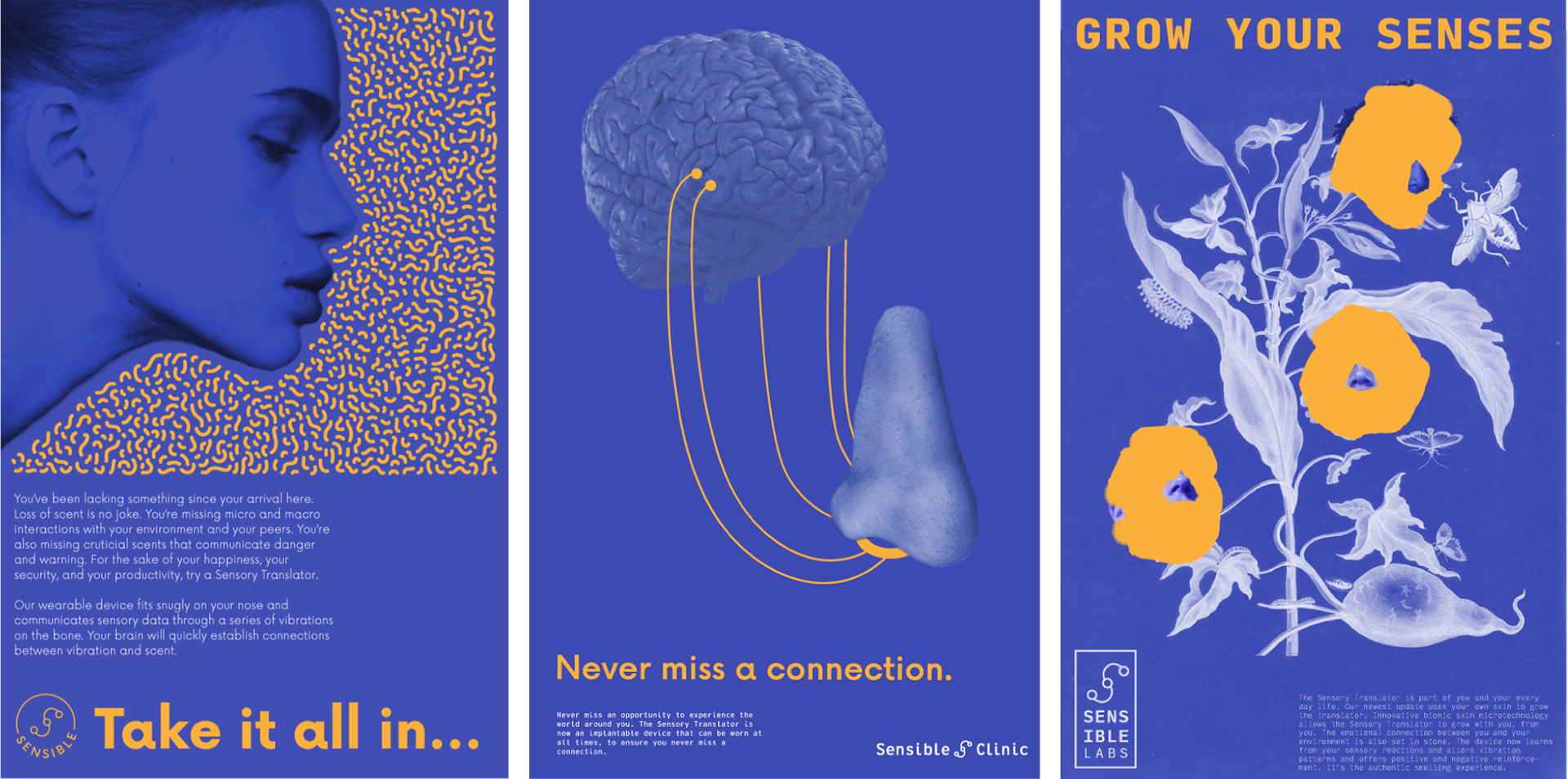Sense and Sensibility is a speculative project that explores human sensory connections through a device that translates smells into nasal vibrations. The device aims to spark critique on how far we will go to preserve small aspects of our humanity that have been stripped of us in a world where an environmental collapse forces humans into an extreme habitat.
Sense and Sensibility explores what it means to feel human in a world where we devastated our humanity by first devastating our environment. We explored what it means to feel human through sensory connections and what happens when those ties are severed.
The Product
The Sensory Translator allows humans living in this state to regain a lost sense (smell), and rebuild informational and emotional connections to their new environment. “Smells” are distinguished through vibration patterns felt on the nose. The Sensory Translator has been prototyped in three shelf generations, each augmenting in invasiveness. It begins as a wearable device, which was created with an Arduino, vibration motors, and distance sensors to allow observers to distinguish which jar of milk is safe to drink by “smelling” them.
The second shelf generation is an implant. This demonstrates a progression, a normalisation, and a need for these human sensory connections.

In the third generation, the device is grown in the habitant’s own skin cells, and then grafted on the nose so that it may grow with them. An additional, emotional, component was added in the third generation so that habitants can experience emotional feedback from their reactions to scents. A temperature generating device is grown in their skin as well, and grafted on the back of the neck to prompt heating and cooling reactions which reinforce individual responses to scents around them.
In the end, we hope observers who test our Sensory Translator may ask: Could we have prevented the need for humans to reconfigure sensory connections?; and also to ask: Should we employ more sensitivity towards our planet to avoid a scenario where we may have to redesign our own bodies to adapt to a world which we destroyed?


